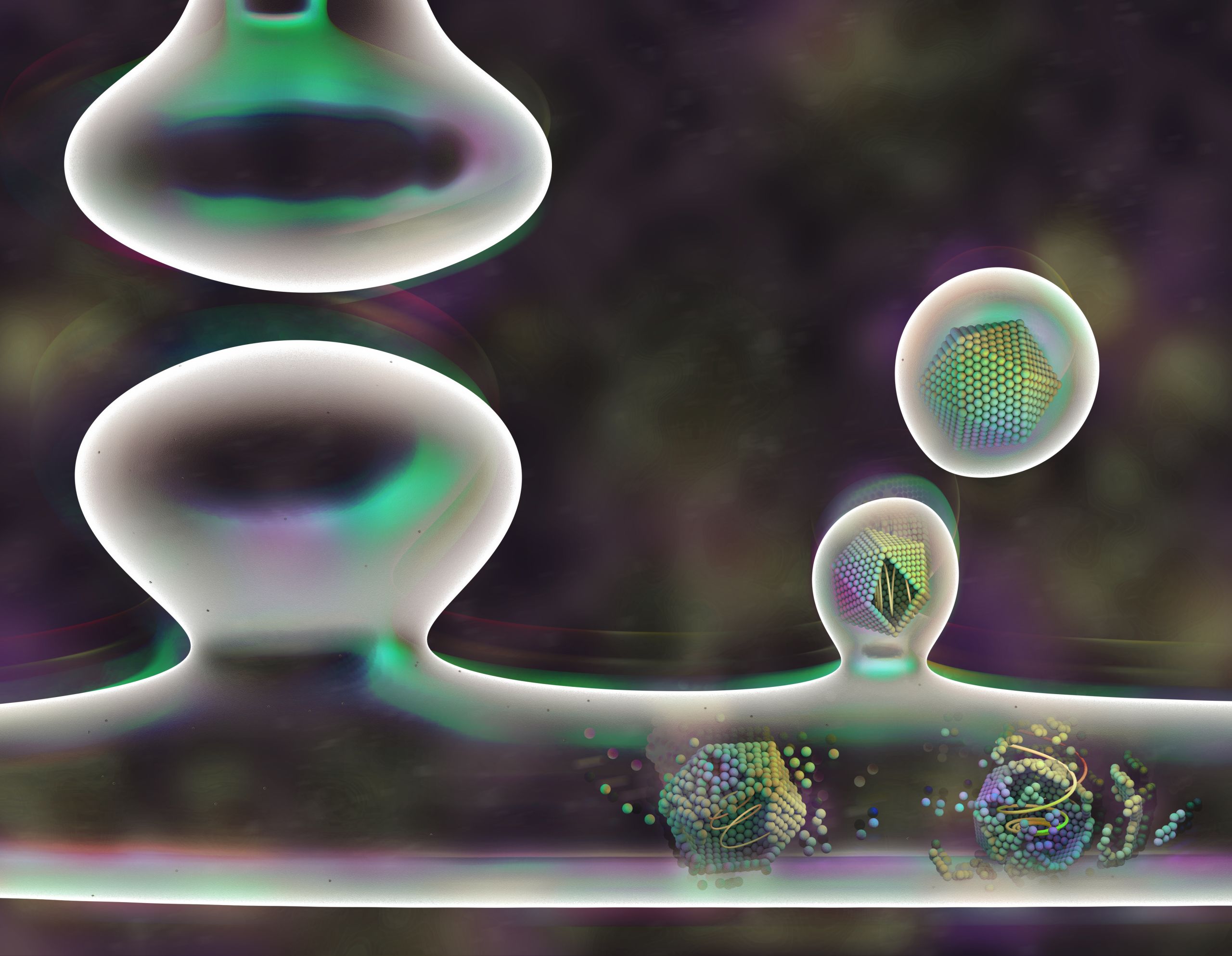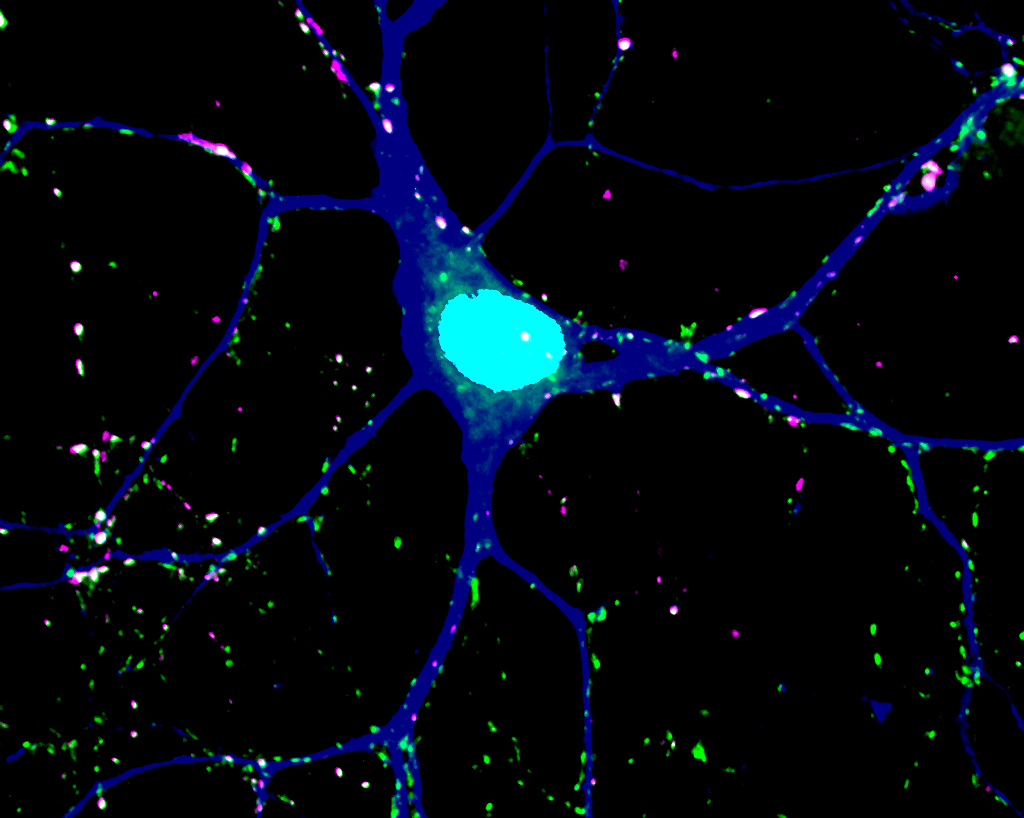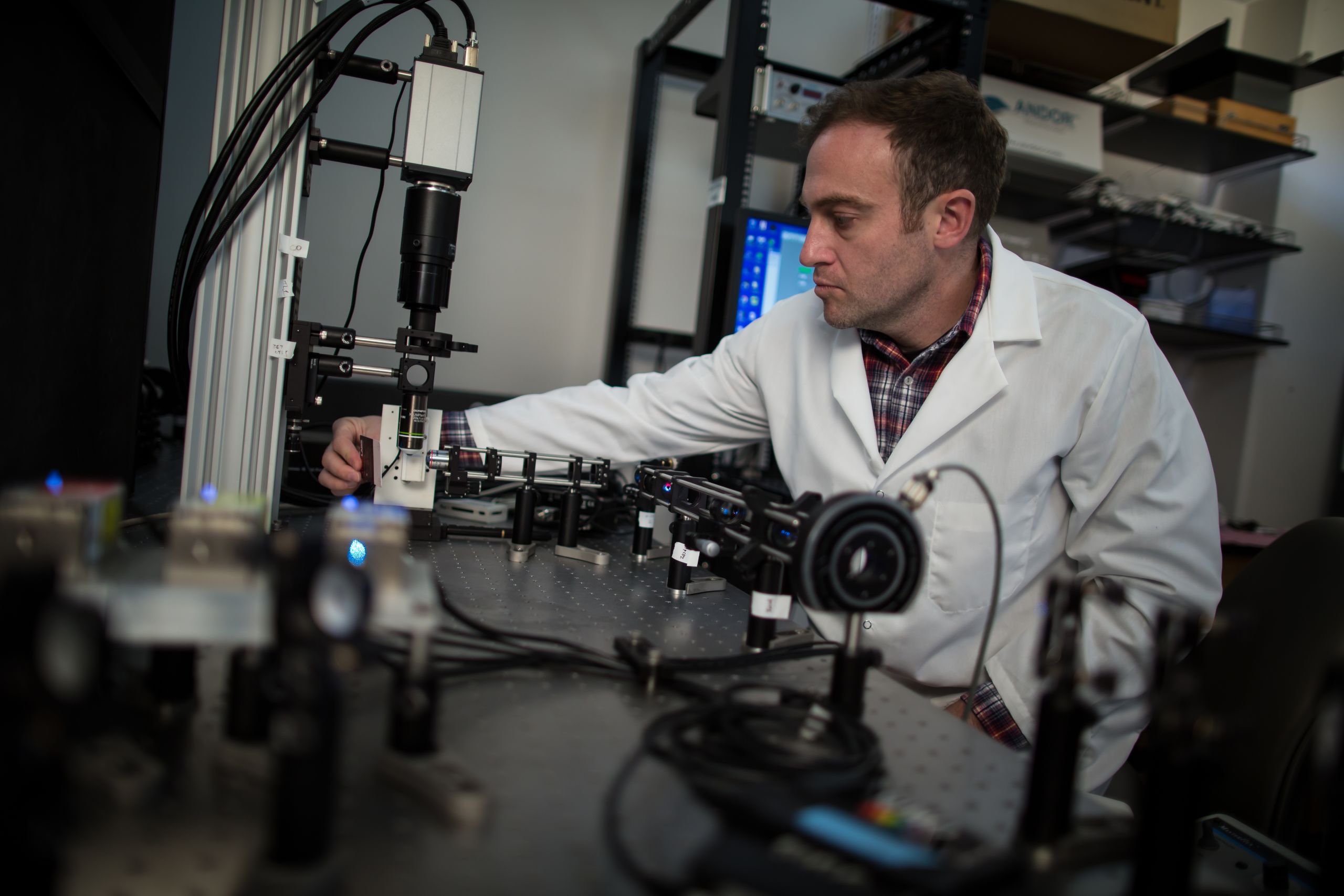PIONEERING THE FUTURE
Stories of Discovery & Innovation
at University of Utah Health

new ways of thinking about neurological disorders
May 18, 2021
Like the brain itself, neurons—specialized cells that transmit vital signals in the brain—are complex. As a result, it’s often difficult to parse what is going on, particularly when neurological disorders and conditions take hold. By developing novel tools, leveraging multidisciplinary expertise, and diligently following their passion, University of Utah Health scientists have been at the forefront of neuroscience for decades. They are making headway in demystifying how neurons and the brain work, what causes them to malfunction, and to find new treatments for diseases that affect them.
One of the fundamental questions puzzling scientists is how do we acquire and store long-term memories? One possibility is a protein called Arc that has properties similar to those that viruses use for infecting host cells. The discovery by Jason Shepherd, PhD, a neuroscientist at U of U Health, opens the prospect that the virus-like protein could be the basis of a novel form of cell-to-cell communication in the brain. If confirmed, it could change our understanding of how memories are made.
Prior work had shown that mice lacking Arc forgot things they had learned a mere 24 hours earlier. Further, their brains lacked plasticity. There is a window of time early in life when the brain is like a sponge, easily soaking up new knowledge and skills. Without Arc, the window never opens.
Shepherd and colleagues saw that Arc formed protein shells that looked like the capsids formed by viruses and conducted a series of experiments to test whether it also acted like one. It did. The researchers concluded that, when Arc was released from neurons, the protein and its cargo could be taken up by another set of neurons—a form of communication between neurons that had never been seen before. The Shepherd lab is digging deeper into these mechanisms to better understand the biology behind how information is stored in the brain.
Learn more about this discovery.
About one in 54 American children are diagnosed with autism by age 8, according to the Centers for Disease Control & Prevention. Utah’s prevalence rate is even higher, with about one in 50 8-year-old children identified with autism spectrum disorder (ASD). Despite its prevalence, little is known about what causes ASD or how to treat it.
Scientists suspect ASD is caused, in part, by a host of genetic factors. Researchers at University of Utah Health detected how alterations in one of these genes, called Kirrel3, could disrupt the formation and function of synapses in the hippocampus, a part of the brain involved in learning and memory. One set of studies identified precisely how specific disease-associated mutations in Kirrel3 alter function of the protein and impact synapses, leading to a better understanding of the gene’s role.
“This is the first experimental evidence that this may in fact be the cause of ASD in those patients,” says Megan E. Williams, PhD, an associate professor of neurobiology at U of U Health. Additional investigations into this process could eventually lead to medical interventions that reestablish normal synaptic function and improve cognitive abilities.
Understanding how pain is processed in the brain is key to developing new pain-relieving treatments. In a series of experiments, U of U Health neuroscientist Adam Douglass, PhD, tested how oxytocin-producing neurons in the brain help regulate pain response in young zebrafish. Their investigations showed that oxytocin neural circuits directly induce rapid and critical behavioral responses that are likely crucial for survival in these animals.
Although oxytocin is more commonly associated with pleasure and its analgesic properties, the results of this study show it also plays an integral role in pain sensitivity and defensive responses that protect against pain and injury.
These findings open the door for further explorations into the therapeutic potential of oxytocin. “This could help us create robust therapeutics to treat pain that no one had given any thought to until very recently,” Douglass says.

Pioneering the Future: Stories of Discovery & Innovation at University of Utah Health
Special thanks to Wes Sundquist for the original collection of discoveries.
Written by: Doug Dollemore
Editing by: Julie Kiefer
Layout and Design by: Kyle Wheeler
Production Supervision: Abby Rooney, Julie Kiefer, Kyle Wheeler
Supported by: Will Dere, Chris Hill, Amy Tanner




